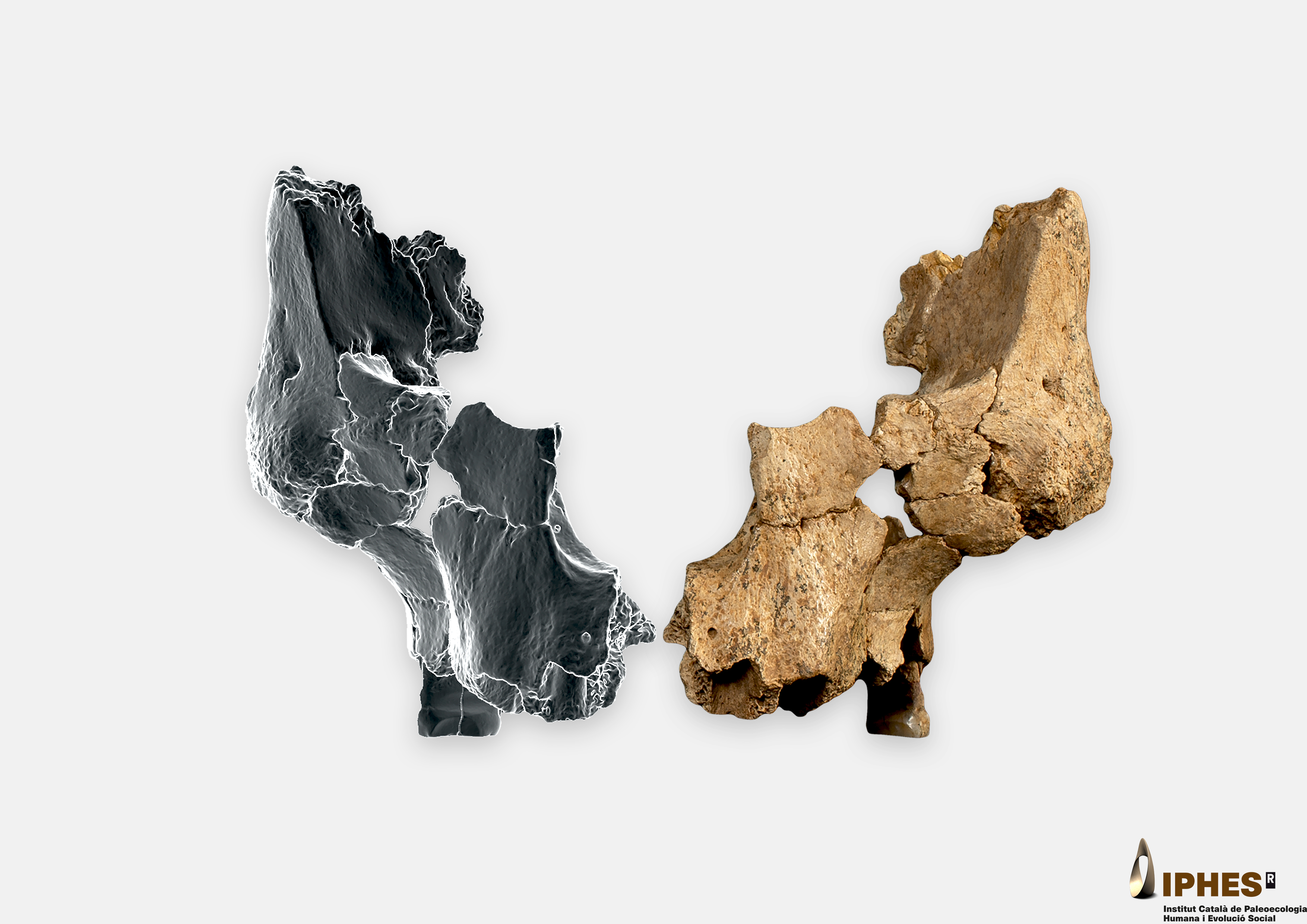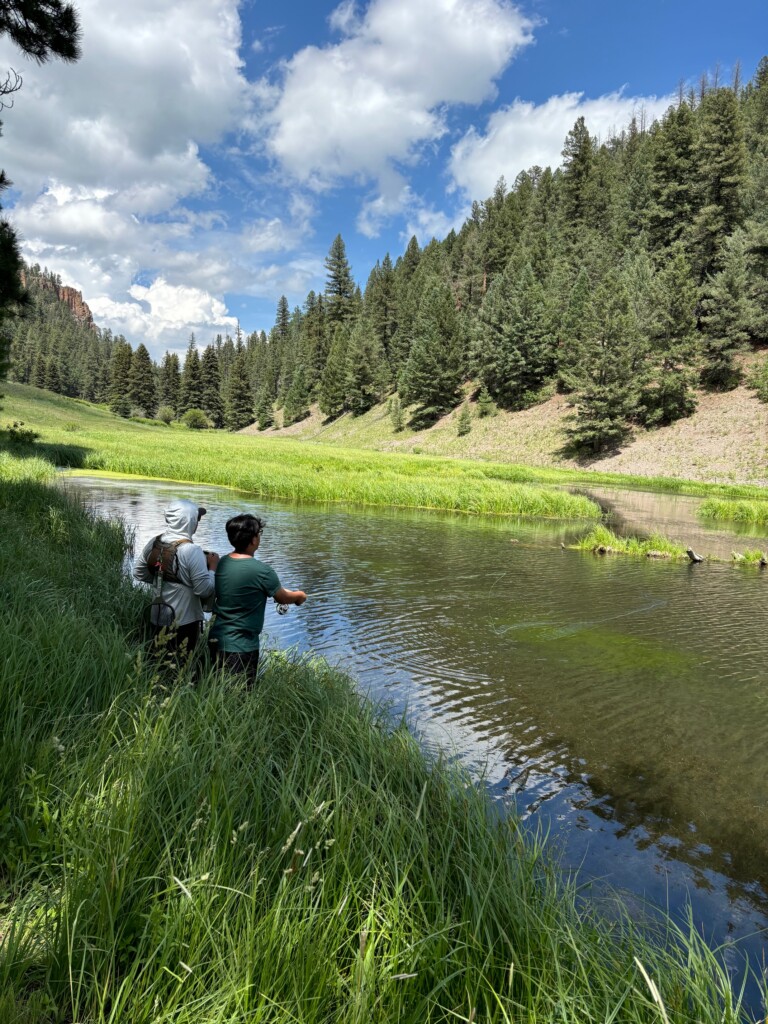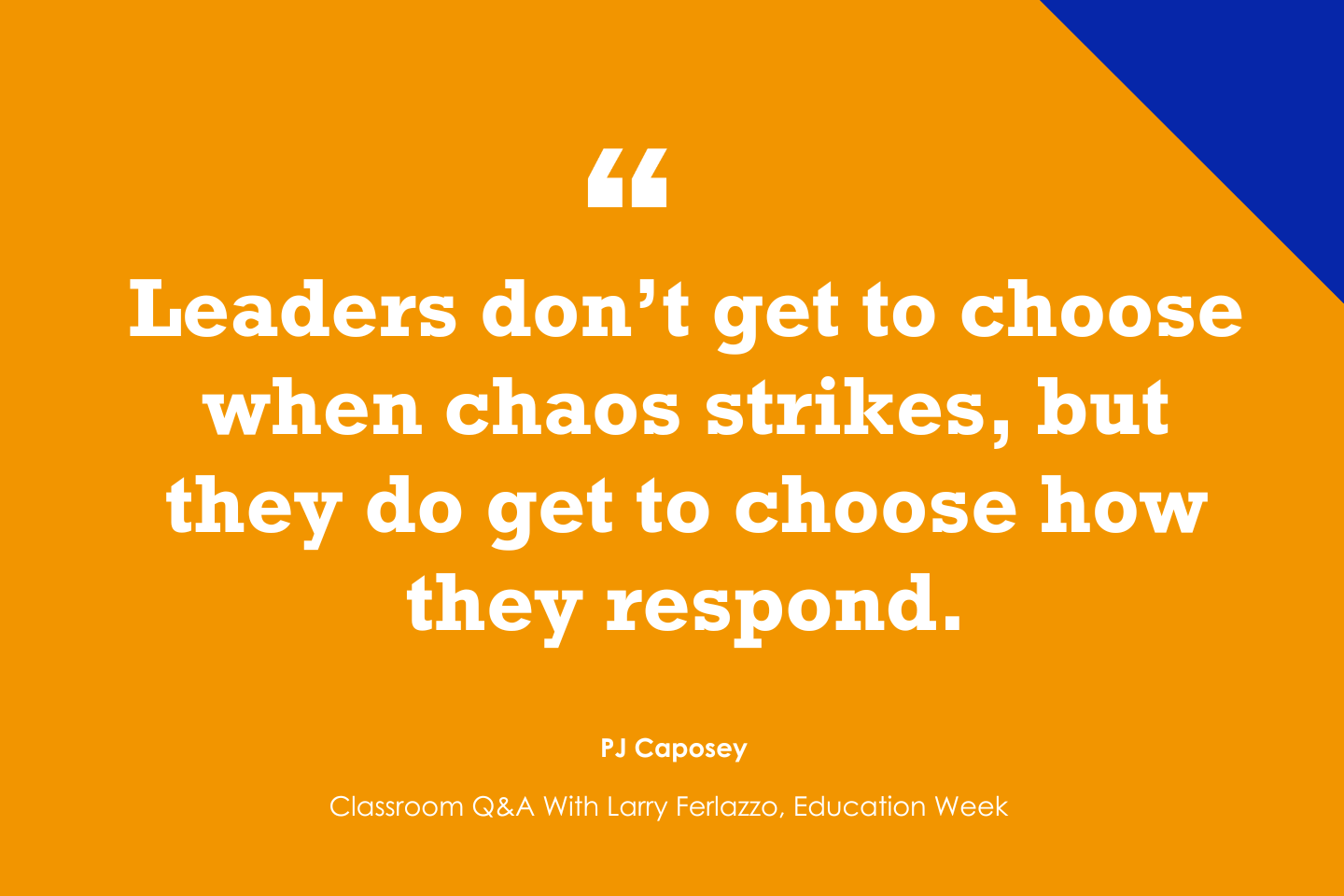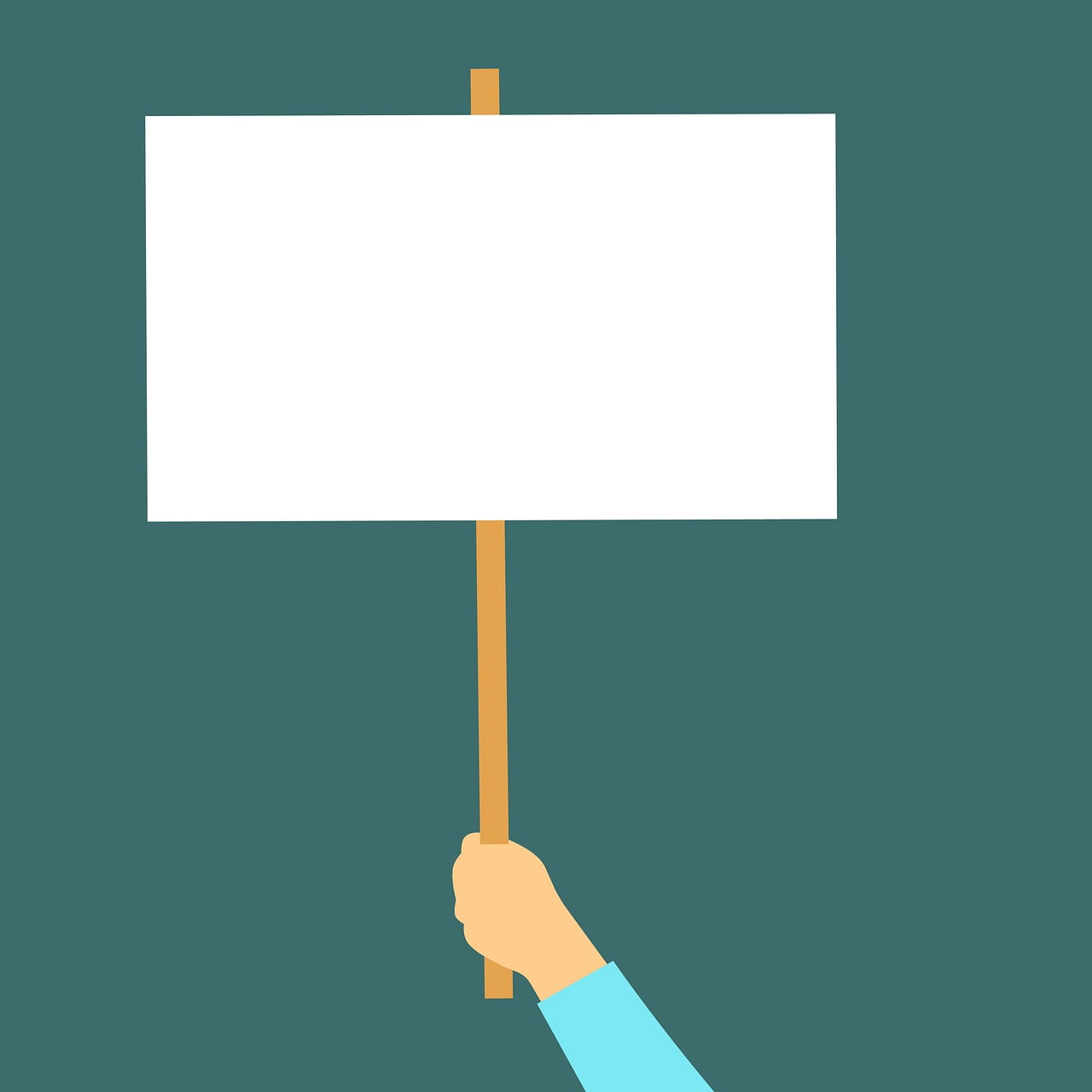By: Kara Bobroff (Dine’/Lakota)
Our Present: From Schools to Networks
You start with a single school – like a small garden designed to speak to the hopes, needs, and vision of the community – a space where you can create new designs and draw on Indigenous wisdom to create new conditions, experiences, and build a community. That’s how the Native American Community Academy (NACA), a middle school in Albuquerque, New Mexico, began 18 years ago. NACA, a tuition-free charter school, was born from over 200 community conversations, and it now serves almost 500 children in grades K-12 from over 60 tribes.
As Tom Vander Ark wrote in the framing blog of this series, “Why We Need More New Schools,” new school development is the early key to building H3 supply.
Many people, however, are skeptical about what can come of one seed – of one single school – a committed community. I believe our story can shed light on this.
From one school – a living, growing instantiation of our communities’ needs, hopes, and vision – you build an Indigenous education network. We built the NACA-Inspired Schools Network (NISN), a movement of students, families, tribes, and educators developing Indigenous community-led schools. NISN is not a cookie-cutter approach to scaling change; it’s deeply invested in community conversations that weave together a vision for what is possible. NISN builds schools and learning experiences that center what each local community – coming together, grappling, considering, debating, reflecting – deems important. We know that our students, families, and communities all serve a role in caring for our children, and we know what we envision for our children and their success. Among the schools in the network, NISN includes a Lakota immersion school that created a Mentor Apprenticeship model, which brought together educators, partners, and other community-based entities to build a broader ecosystem. NISN has created a series of professional learning opportunities for communities to start and sustain Indigenous learning models, including a pre-teacher service pipeline. The pipeline, through our Indigenous Education Corps, is an aligned community-based educator program grounded in the NACA framework of Indigenous education. We design curriculum aligned with the communities vision and desired outcomes and assess for those specific outcomes that are community-driven.
Learning doesn’t just happen in school buildings. It is rooted in land and community. We have also built and expanded outside the school broader experiences through the One Generation Fund, which addresses the sustainability of healthy, locally-grown food, Indigenous languages, education, holistic wellness, family cohorts, and economic development. One Gen supports everything from farming experiences to coding – a wide variety of experiences that our young people need to make their way in the world, deeply grounded in land, language, culture, historical perspective, historical knowledge, and, as needed, on centering Indigenous values and prioritizing relationships and connection.
Our Past: Erasure
Formal non-Indigenous US education in the North American colonies and early United States was largely a local endeavor. The US chose to tax themselves, hire teachers, and build a schoolhouse. Education was meant to embody local US values and local governance. The result is we have almost 14,000 school districts in the country. The experience for Tribes and Native American families was much different. Quickly two systems emerged, one for the US privileged and one that decimated and damaged Native children’s well-being and life while setting into motion the most violent systematic and intentional attempt of an erasure of a Native American people – yet we survived.
Historically, self-determination in education was denied to Indigenous communities. Formal colonial public education for us began in 1819 with the federal government funding missionaries to ‘civilize’ us and eliminate our ways of life. Then, for another 120 years, the federal government funded privately-run boarding schools with the same purpose. Even today, native schools are governed by the Bureau of Indian Education which is part of the US Department of the Interior, not the Department of Education – with a combination of Tribally Controlled schools and federally controlled schools. Today, the efforts to acknowledge and address the legacy of the boarding schools have been set in motion by Secretary Deb Halland who launched the Boarding School Initiative to engage communities to address the painful impact of boarding schools in the US. We believe we must begin to not only heal from the impact of boarding schools but build a better path forward. This path has the potential to lead to dramatic transformation to create a model of Indigenous education in the US that honors and respects our children and families and restores language and culture for generations to come.
We created NACA and other schools like it to enact local self-determination because our voices and experiences must anchor the conversation of what our young people need. Almost 20 years ago, we understood that learning environments needed to be authentic, purposeful, personalized community-driven, joyful, challenging, relevant, holistic, and accessible.
We have been supporting the work by building schools that embody these principles despite federal, state, and local regulations, laws, and institutions that believe and behave otherwise. We start with the community’s vision first and grow a school grounded in Indigenous values and ways of knowing.
We have built Indigenous knowledge and operational expertise on how to navigate these federal, state, and local regulations, laws, and institutions. We have done this so our children have a place that respects and honors who they are and their vision for their future – academically prepared and aligned with a deep passion for learning, secure in their identity, and healthy.
Our movement has always had to build infrastructure from the ground up to enable the next generation, the next horizon.
Our Future: More Indigenous-Centered Learning
There are three key areas of work that will enable us to move forward with the next horizon of learning and building American democracy:
changing policies and funding to support Indigenous education;
building a network of networks and ecosystem supportive of an Indigenous vision for learning; and
seeding even more new schools and learning experiences that even more deeply embody learning through Indigenous values, real-world experiences, relationships, holistic wellness, and land-based learning.
Policy + Funding
The U.S. government spent a fortune stripping native children of their culture in the name of education. The Boarding School Initiative launched by Secretary Haaland estimates that between 1871 and 1969, $23.3 billion (in 2023 inflation-adjusted dollars) were allocated to these ends. It is now time to launch a similar commitment, both with funding and policy, that ensures a new way of supporting and revitalizing Indigenous learning and languages.
We need:
The federal government to work with Tribes, states, industry leaders, Indigenous researchers, funders, families, and communities to support efforts to create more Indigenous learning opportunities. There should be a coordinated effort to support policies that establish an “Indigenous Education Ecosystem” that includes sustainable funding for existing and new schools;
Policies that support new pathways for educator credentialing and targeted recruitment and access so that community members can support young people’s learning in a wide variety of ways. We fundamentally believe that we all have a role in learning, not just traditionally licensed teachers. We also need more pathways to becoming teachers;
Alternate school authorization processes and other freedoms, including new assessment methods, to align and build Indigenous learning opportunities while ensuring academic excellence and relevance; and
New pathways for alignment of Indigenous values and learning systems so that schools that are currently not fully funded can access sustainable funding aligned with what Indigenous learning systems need to thrive. We know there are approximately 100 immersion schools and programs that currently operate without sufficient support.
An end to the moratorium on new Bureau of Indian Education (BIE) schools.
An Indigenous Learning Ecosystem
NACA and NISN aren’t alone in growing gardens of what could be for Indigenous education and community-based education. There are many important examples and networks underway. Here are a few:
Building successful and sustainable Indigenous learning ecosystems that are grounded in the importance of revitalization of languages is vital. Some examples of this excellence include the amazing work of the Keres Children’s Learning Center and the Indigenous Montessori Institute. The existing and growing movement of Indigenous Montessori Schools solely dedicated to language revitalization and supporting educators is a call to create similar efforts within other Indigenous communities.
Hawai’i has a strong local movement of Hawaiian-based language immersion schools such as the Kaiapuni schools who have worked to create ways to assess their core work of language preservation to demonstrate what works and how alignment with learning is more relevant to their families and communities’ vision for their education. The University of Hawai’i at Hilo created a specific track for Indigenous language educators – Ka Haka ʻUla O Keʻelikōlani, the College of Hawaiian Language, where Hawaiian is taught and is also the medium of instruction – to continue the decades-long effort toward Hawaiian language revitalization. Voices of Language and Native Science Report highlights the Hawaiian model as a successful language revitalization model.
The Cherokee Mentor Apprenticeship program was designed to create more speakers and they have invested in the future of their language. Many tribes want to see new pathways for educators to revitalize their languages. We have been redesigning entrenched educational institutions for generations and are ready to create, build, and grow the Indigenous ecosystem we need. Those looking to increase these efforts within their tribal communities can look to the Hawai’i and Cherokee models for guidance.
As the examples above show, models for the policy changes we’re calling for are being developed throughout the nation, as well as abroad – New Zealand’s nationwide innovative approach to Indigenous education, for example.
We need support in building a network of networks that can share knowledge, models, and policy recommendations so that each community or local network isn’t reinventing the wheel.
Models of Land-Based Learning
Our work is continuing to develop, and our horizon continues to expand. Just like gardens, schools and networks learn as they root themselves and mature. We envision an even deeper connection to the land.
NACA is a premier example of a successful, community-based, land-based learning example. Their work, specifically the work of the land fam (family) is where students are reconnecting to the land and learning about Indigenous science deeply rooted in our original and sustainable ways of living in alignment with the earth and one another. Children connect to the land and learn through Traditional Ecological Knowledge (TEK), which holds solutions for addressing climate change, accessing healthy foods, and caring for our own humanity and wellness.
Photos: Alice Tsoodle, NACA Land Based Healing and Learning team
We know what works and see a path forward. Right now, due to the moratorium on new BIE schools, and the constraints with funding, there are structural barriers to expanding these successful models. A new autonomous school authorizer that is focused on Indigenous learning models could allow a pathway for new schools to be established from early learning to adulthood. This process could also include creative approaches to recruiting and certifying Native language educators. Finally, we can create opportunities to develop and implement aligned assessments that ensure that students are engaged in an exemplary Indigenous education that is grounded in authentic learning and access to a vibrant native language revitalization network.
With urgency and focus we need to plant the seeds that free ourselves from the confines of a historically damaging system for Native American children and build what our children deserve that is rooted in the brilliance of Indigenous communities. The future of our world depends on it!
Kara Boboroff (Dine’/Lakota) is the Founder of the Native American Community Academy (NACA), NACA-Inspired Schools Network (NISN), One Generation Fund.
The post Our Past, Present, and Future appeared first on Getting Smart.
Explore the transformative journey of NACA, showcasing the power of Indigenous-led education networks in fostering community-driven, holistic learning experiences.
The post Our Past, Present, and Future appeared first on Getting Smart. New Pathways, Place Based Education, community, indigenous, Place-Based Education Getting Smart









